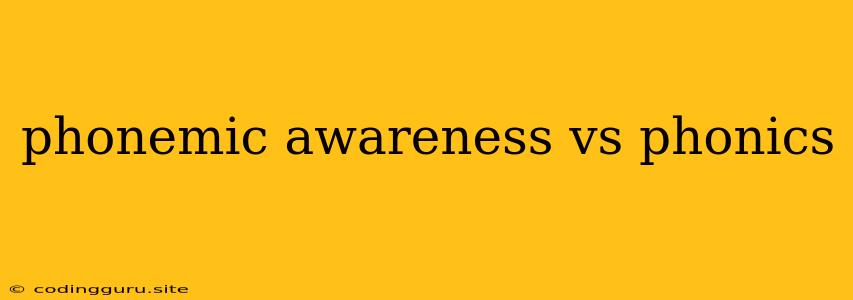Phonemic Awareness vs. Phonics: What's the Difference?
For parents and educators alike, the terms "phonemic awareness" and "phonics" often get thrown around interchangeably. While they are both crucial components of reading development, they are not the same thing. Understanding the differences between these two concepts is essential for fostering a love of reading and a solid foundation for literacy in young learners.
What is Phonemic Awareness?
Phonemic awareness is the ability to identify, manipulate, and understand the individual sounds (phonemes) within spoken words. It is the foundation of reading and is crucial for developing strong decoding skills. Think of it as the ability to "hear" the sounds in words.
Examples of Phonemic Awareness Activities:
- Rhyming: Identifying words that sound alike (cat, hat, bat)
- Blending: Putting individual sounds together to form a word (c-a-t = cat)
- Segmenting: Breaking a word into its individual sounds (cat = c-a-t)
- Deleting: Removing a sound from a word (cat without the "c" sound becomes "at")
- Substituting: Replacing a sound in a word (cat with the "b" sound becomes "bat")
What is Phonics?
Phonics is the understanding of the relationship between letters and sounds. It teaches children how to decode written words by associating letters or letter combinations with their corresponding sounds. Think of it as the bridge between spoken sounds and written words.
Examples of Phonics Activities:
- Letter-sound correspondence: Recognizing the sound that a letter makes (like the "a" in "apple" makes the "ah" sound)
- Sounding out words: Blending individual sounds together to read a word (like "c-a-t" = "cat")
- Decoding multisyllabic words: Breaking down longer words into smaller chunks and blending the sounds together (like "cat-er-pil-lar")
The Key Difference: Spoken vs. Written
The key difference between phonemic awareness and phonics lies in their focus:
- Phonemic Awareness: Focuses on spoken language and manipulating the sounds within words.
- Phonics: Focuses on written language and connecting letters to their corresponding sounds.
Why are Both Important?
Both phonemic awareness and phonics are essential for reading development because they work together to build a strong foundation for decoding and comprehension.
- Phonemic Awareness: Helps children understand the structure of spoken language and enables them to manipulate sounds.
- Phonics: Provides the tools to translate those spoken sounds into written words.
How Can You Help Your Child Develop Both?
Here are some practical tips for supporting your child's development in both phonemic awareness and phonics:
Phonemic Awareness Activities:
- Sing songs with rhyming words.
- Play sound games: "What sound does the word 'cat' start with?"
- Encourage your child to sound out words they hear.
- Play word puzzles and games that focus on blending sounds.
Phonics Activities:
- Read aloud to your child regularly.
- Point out letters and sounds in books.
- Play letter matching games.
- Use magnetic letters or alphabet blocks to build words.
The Importance of Early Intervention
The earlier a child develops phonemic awareness and phonics skills, the more likely they are to become confident and proficient readers. Children who struggle with these skills may experience difficulties with reading comprehension and overall academic performance.
Tips for Identifying Potential Challenges:
- Observe your child's progress: If your child struggles with rhyming, sound blending, or recognizing letters and sounds, it's important to seek guidance from their teacher or a reading specialist.
- Early intervention: Early intervention can make a significant difference in helping children overcome reading difficulties.
Conclusion
Phonemic awareness and phonics are two essential skills for reading development. While they are different, they work together to help children crack the code of language. By understanding the difference between these concepts, parents and educators can create a supportive learning environment that empowers children to become confident and proficient readers.
